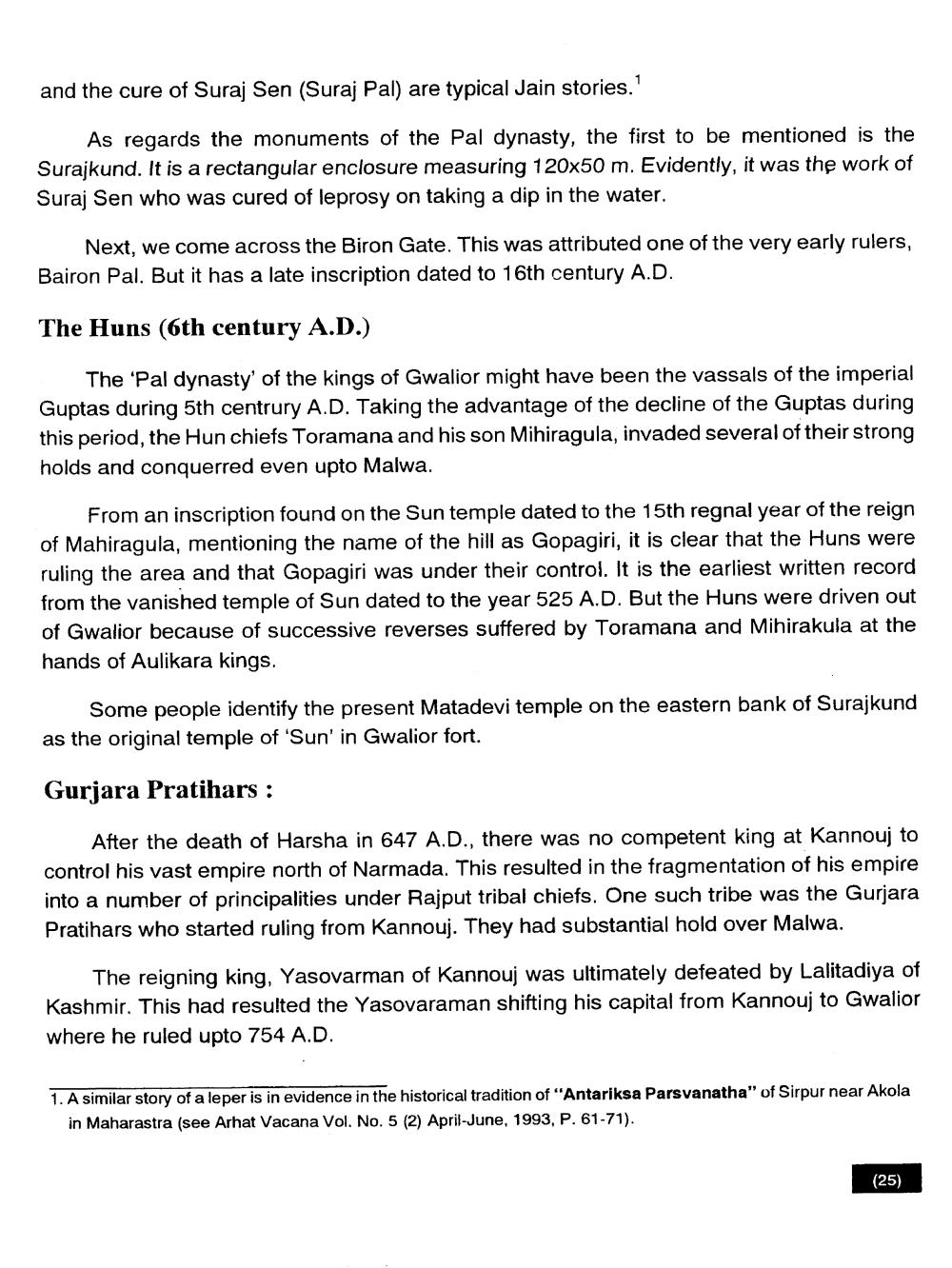________________
and the cure of Suraj Sen (Suraj Pal) are typical Jain stories.'
As regards the monuments of the Pal dynasty, the first to be mentioned is the Surajkund. It is a rectangular enclosure measuring 120x50 m. Evidently, it was the work of Suraj Sen who was cured of leprosy on taking a dip in the water.
Next, we come across the Biron Gate. This was attributed one of the very early rulers, Bairon Pal. But it has a late inscription dated to 16th century A.D.
The Huns (6th century A.D.)
The 'Pal dynasty of the kings of Gwalior might have been the vassals of the imperial Guptas during 5th centrury A.D. Taking the advantage of the decline of the Guptas during this period, the Hun chiefs Toramana and his son Mihiragula, invaded several of their strong holds and conquerred even upto Malwa.
From an inscription found on the Sun temple dated to the 15th regnal year of the reign of Mahiragula, mentioning the name of the hill as Gopagiri, it is clear that the Huns were ruling the area and that Gopagiri was under their control. It is the earliest written record from the vanished temple of Sun dated to the year 525 A.D. But the Huns were driven out of Gwalior because of successive reverses suffered by Toramana and Mihirakula at the hands of Aulikara kings.
Some people identify the present Matadevi temple on the eastern bank of Surajkund as the original temple of 'Sun' in Gwalior fort.
Gurjara Pratihars :
After the death of Harsha in 647 A.D., there was no competent king at Kannouj to control his vast empire north of Narmada. This resulted in the fragmentation of his empire into a number of principalities under Rajput tribal chiefs. One such tribe was the Gurjara Pratihars who started ruling from Kannouj. They had substantial hold over Malwa.
The reigning king, Yasovarman of Kannouj was ultimately defeated by Lalitadiya of Kashmir. This had resulted the Yasovaraman shifting his capital from Kannouj to Gwalior where he ruled upto 754 A.D.
1. A similar story of a leper is in evidence in the historical tradition of "Antariksa Parsvanatha" of Sirpur near Akola
in Maharastra (see Arhat Vacana Vol. No. 5 (2) April-June, 1993, P. 61-71).
(25)




